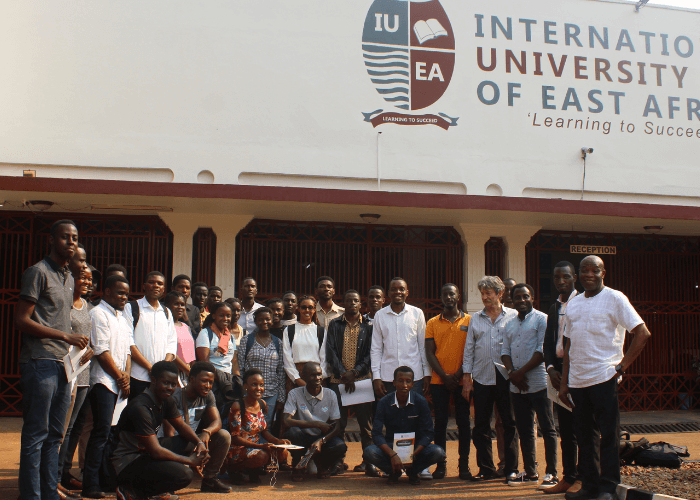Slums in Africa were one of the issues tackled at the 6th iteration of the International Conference of Contemporary Affairs on Architecture and Urbanism held in one of the International University of Africa’s state-of-the-art smart classrooms and streamed on the university’s YouTube channel. Staying true to its mission of providing practical knowledge, IUEA allowed the students of its engineering courses to learn from and interact with architectural veterans from across the globe. Not to mention expressing the university’s support for the global architectural community and its vision of enriching the lives of the community.
What constitutes a slum?
Slums are “areas that cannot decay any further”
– Said Dr Abdulsalam Shema, Senior Lecturer, the International University of East Africa
Dr Abdulsalam provided a simple holistic definition of slums. This was crucial because only by grasping the characteristics of slums can we create strategies to design a framework that can negate their persistence. The professor encapsulated various definitions of a slum such as the UN’s definition of a slum as an area that lacks basic amenities due to overpopulation as simply an area that has reached the precipice of decay.
How do we tackle the issue of slums in Africa?
“If the old models – of dealing with the issue of slums – are not working, that means a new development model is needed”
– Said Prof. Emeka Akaezuwa, Vice Chancellor, the International University of East Africa.
The University proudly had its Vice Chancellor, Professor Emeka proposing the regional development model. Rather than rehabilitating failing models, we should try one that has worked and takes advantage of the resources already available in an area. If an area has an abundance of minerals then set up a mining regional development zone. Thus the professor proposed a solution that dealt with the issue of rural-urban migration by improving the economy of rural areas.
How to design lasting solutions for slums in Africa?
“The plan needs to respect the natural growth of a neighbourhood”
– Explained Dr Emmanuel Ssinabulya, the president of the Uganda Society of Architects and Vice Chair of Uganda’s Construction Sector Skills Council.
Dr. Emmanuel explained that to design a sustainable community, the plan needs to include the involvement of the current dwellers, a well-informed budget, information sharing and teamwork with the community, the constant assessment and adjustment of the methodology and a transferable model. The economic and social needs of a community will eventually erode any design implemented unless the community understands the need for a safer environment.
Arch. Jorge Mario Jauregui proposes a “red and green” approach to dealing with slums in Africa
“We need to tread lightly on the Earth”
– Urged Arch. Jorge Mario Jauregui, an award-winning architect renowned for building over 30 settlements.
The prolific Arch. Jorge Mario Jauregui proposed the reclamation of man’s harmonious relationship with nature by proposing an environmentally cautious approach to architecture. Arch. Jorge displayed how we can balance our social and economic needs with those of nature with images of his breathtaking architectural designs including the use of environmentally cautious architecture to reduce energy consumption and how modern architecture can use spaces sparingly to prevent congestion.
The Q&A session
After the speeches, the speakers went after all the audience’s lingering questions. These included queries about how such huge projects get financed, their impact on local rent prices and who is to blame for the state Uganda finds itself in. They were each met with eloquent responses from the guest speakers. Arch. Jorge explained that architects need the support of those governing the areas they wish to improve both legally and financially. He was joined by Dr Amanda who emphasized that increments in rental prices are an inevitable consequence of development and that though some might be more culpable than others, we all have a responsibility to the communities in which we reside.












